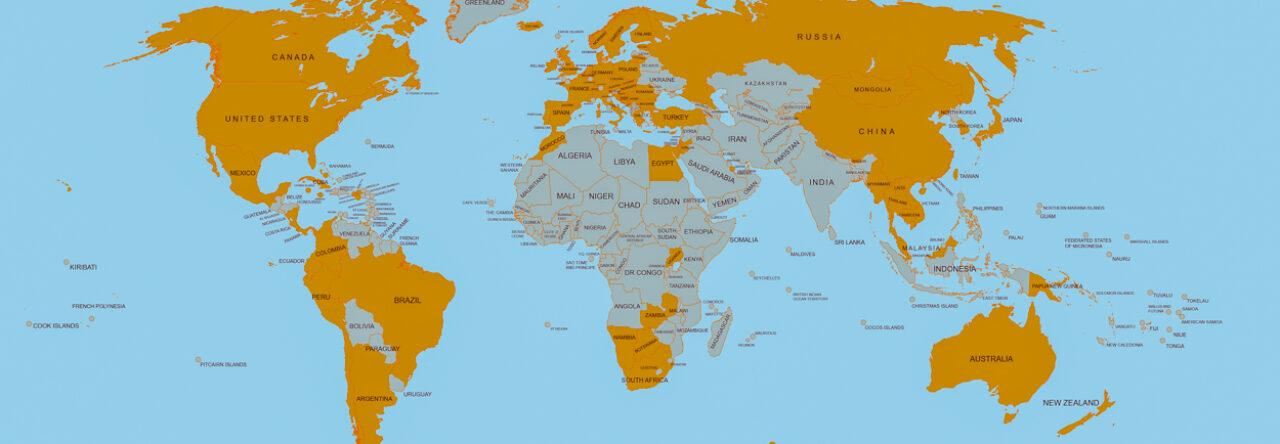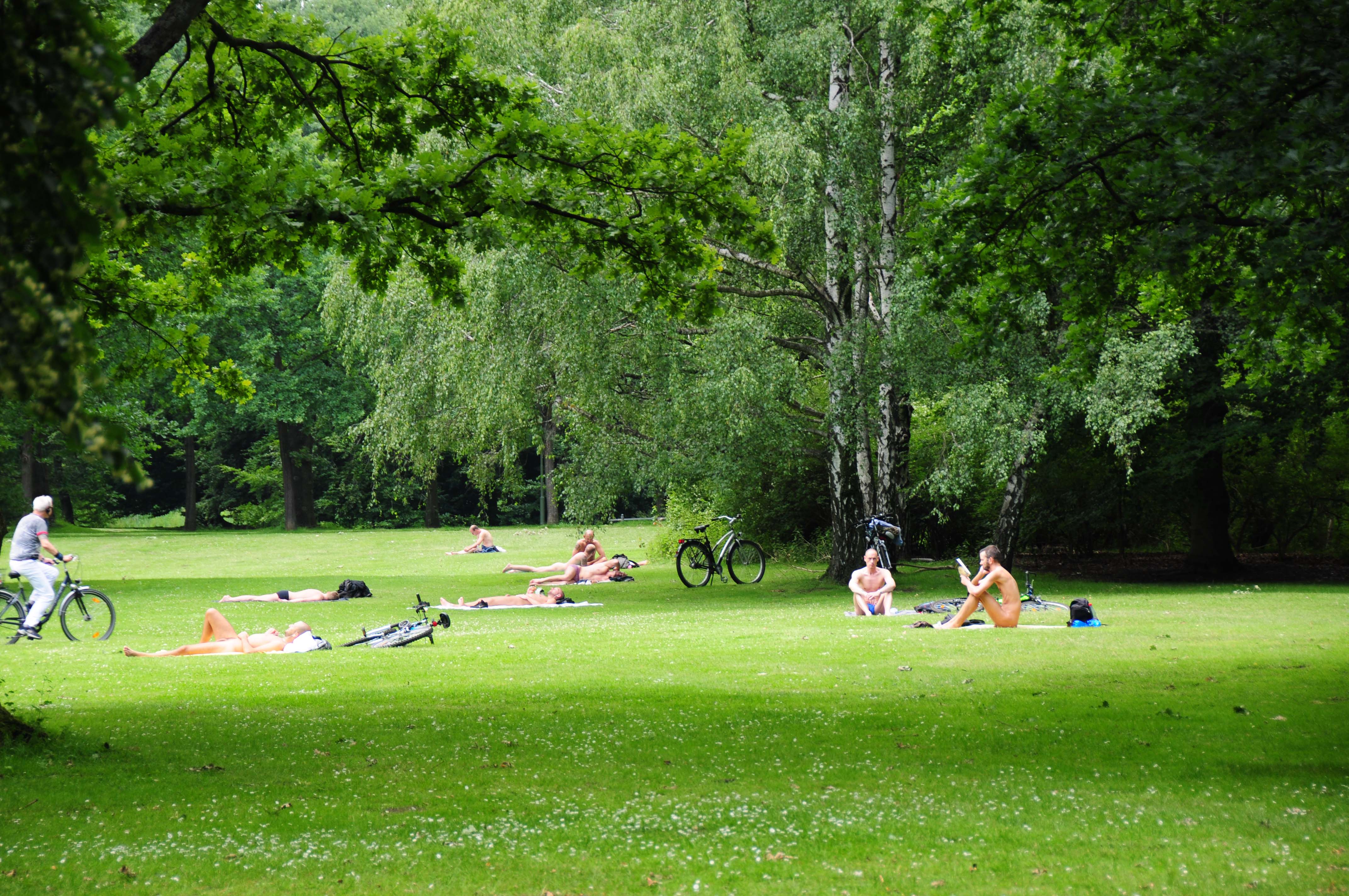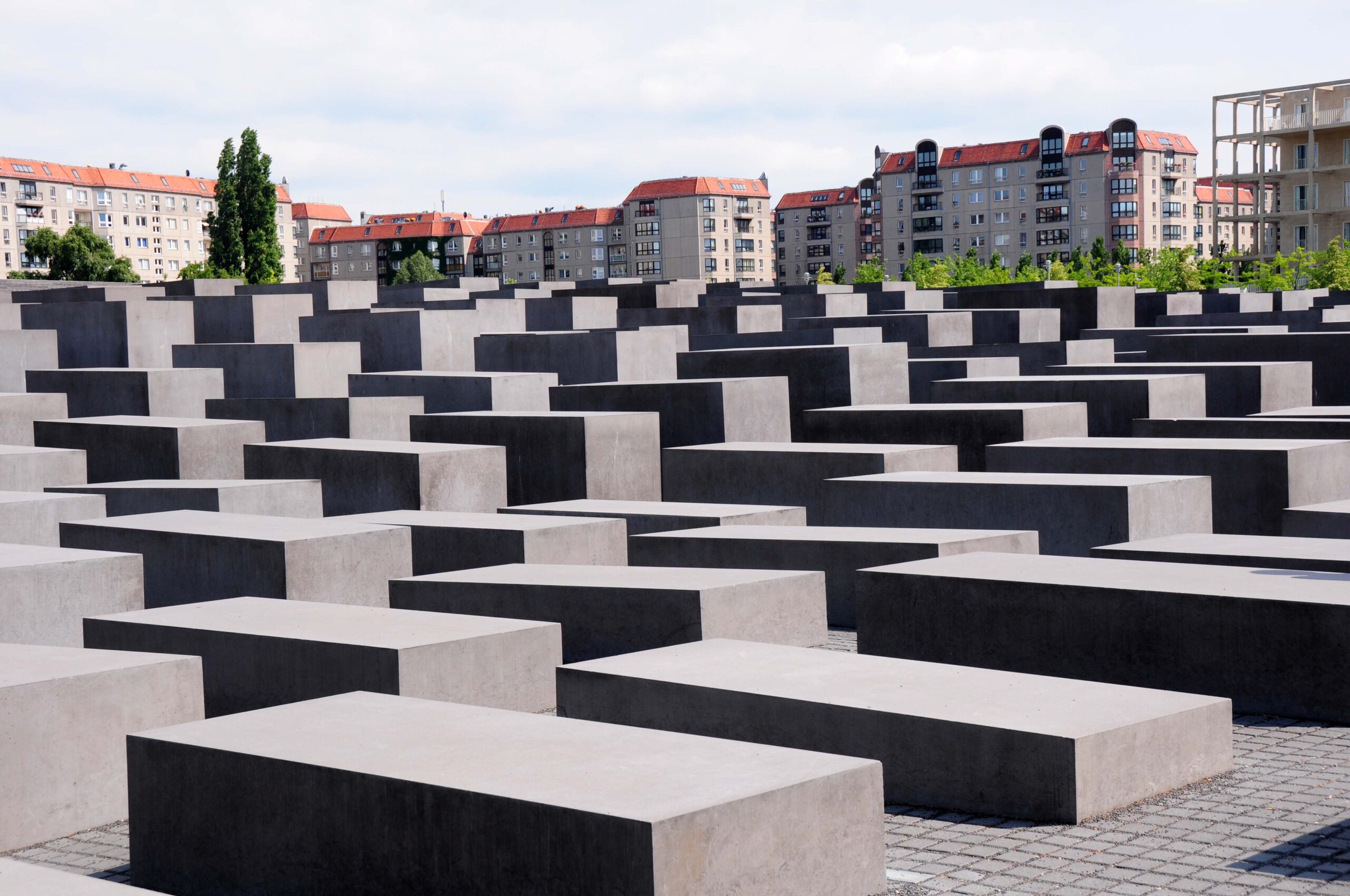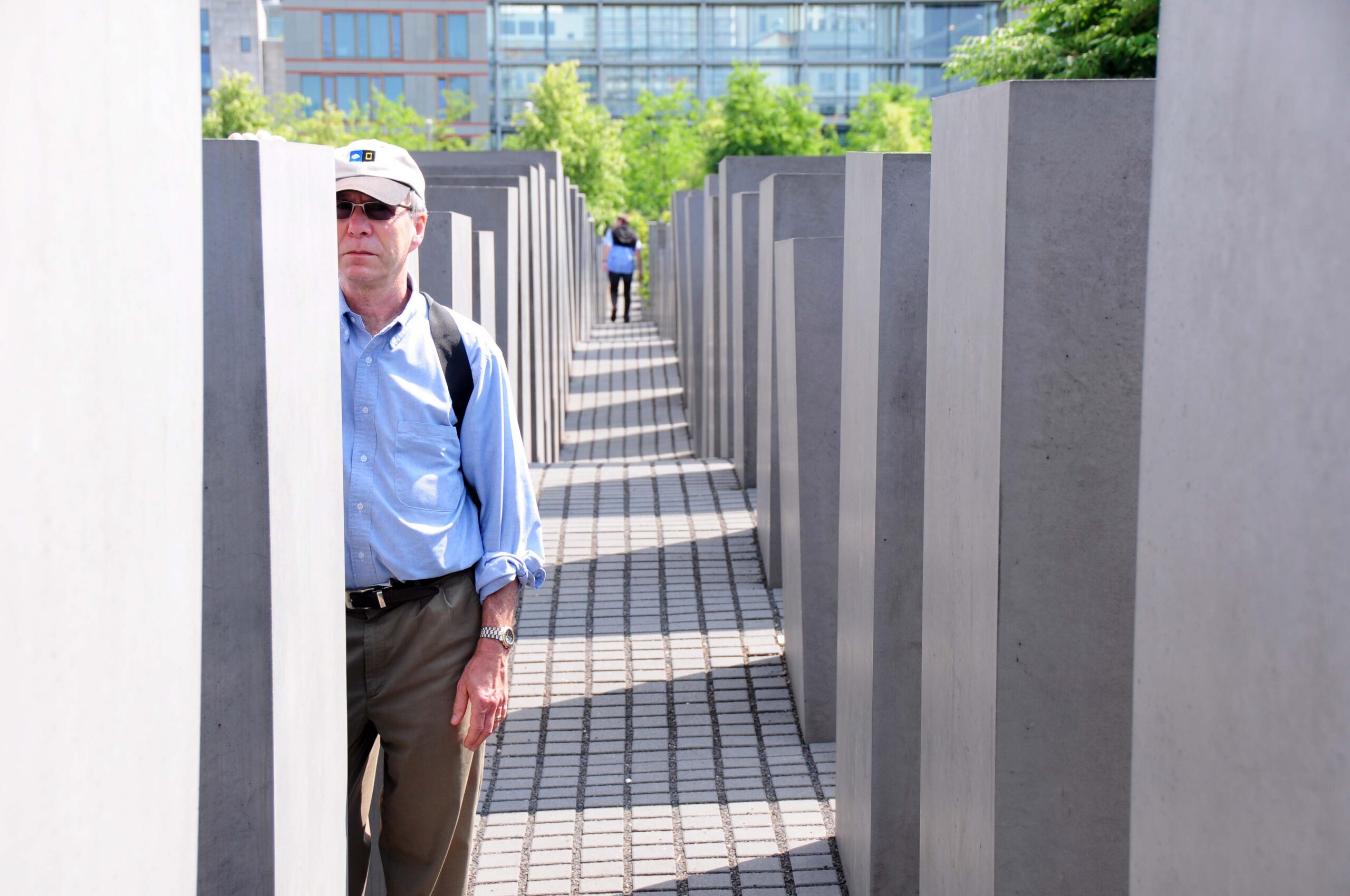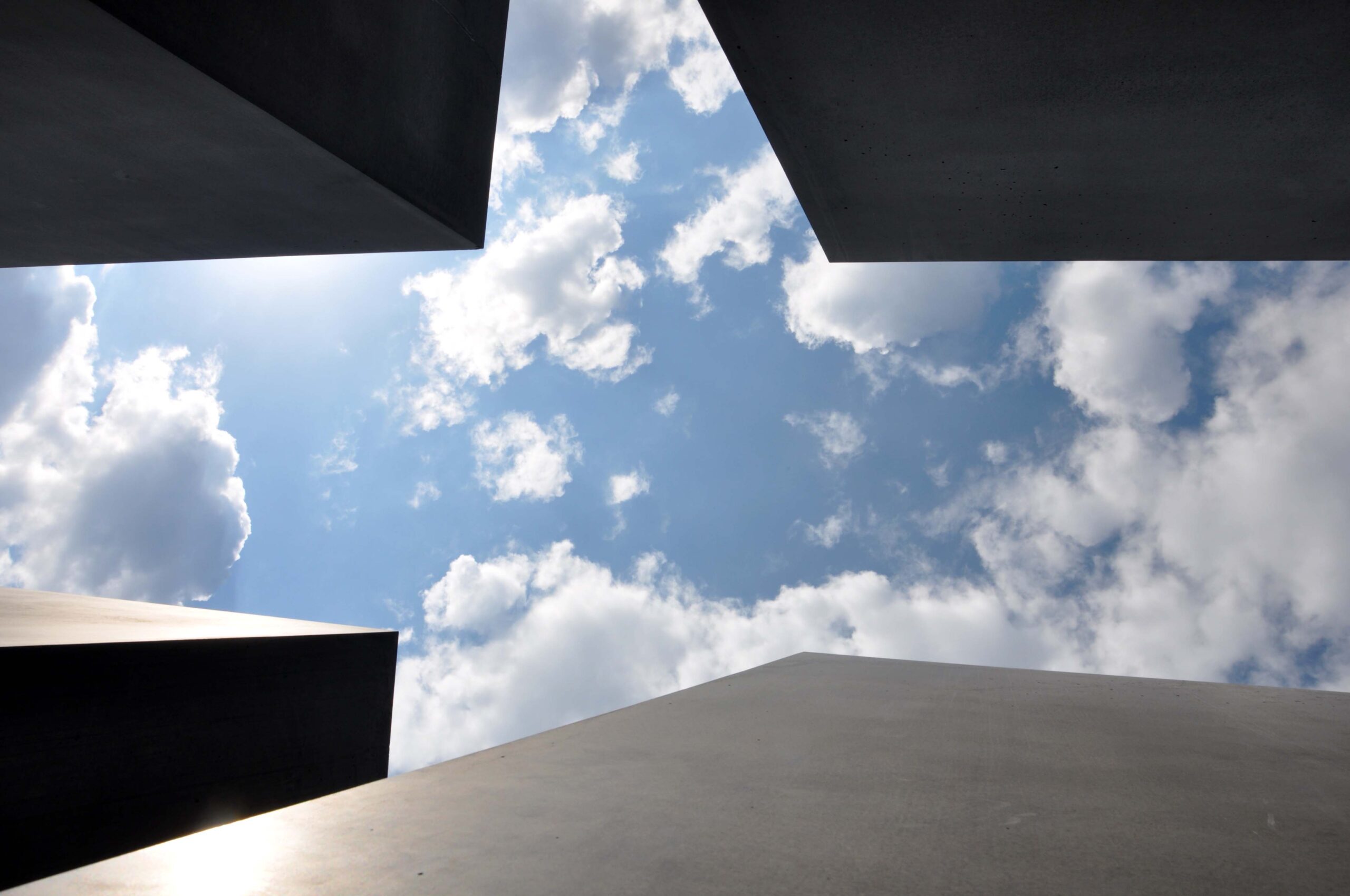Berlin
June 24, 2009
We arrived in Berlin at about 1:00 in the afternoon. Since we connected through Brussels, our passports were stamped there and arriving in Berlin was just like arriving in Chicago. No customs, no passport checks, just collect your luggage and grab a cab.
Downtown Berlin was just minutes away. We were enthralled with the sights and couldn’t wait to drop off the luggage and start walking. By 2:00 we hit the streets. That was much better than sitting down as we probably would have crashed. We decided to just walk the area around our hotel. Ha – those of you that have traveled with us know we would never stop at that. One street literally led to another and before we knew it, we had walked for three hours. So – where did we walk and what did we see? Keep reading….
Right across from our hotel is the Intercontinental Hotel where a Greenpeace demonstration was going on. The immediate area was surrounded by the Greenpeace in yellow, the Police in green and the press with their huge cameras and long lenses. A little excitement to start our afternoon.
Our hotel in on Budepester Strasse (in what was West Berlin), in the Tiergarten section of town (more on that later). We walked through the Diplomatenviertel – the Diplomatic Quarter – where many of the embassies are. As with almost all the buildings in Berlin, most of these were also bombed and then rebuilt by different architects. Which was a good thing as the Fascist interpretation of Neoclassicism and the influence of Albert Speer as the head architect meant the most of the houses in pre-war Berlin (and some which are still standing) was very homogenous and bleak.
Tiergarten Park
We continued walking to the Tiergarten, the largest park in Berlin which is in the geographic center of the city. It is 495 acres and was once a forest used as a hunting reserve. The avenues of the park are lined with statues such as of Goethe and Wagner.
We walked through the park where the lawns were covered with people sunning themselves –mostly men with no clothes. We walked to the Siegessaule (the Triumphal Column, built to commemorate the Victory of the Prusso-Danish war of 1864. It is topped by a gold figure representing Victory and called Goldelse. As it stands in the center of five large boulevards (called the Grosse Stern or Great Star) you have to go through an underground tunnel to get there. Once there, there is a lovely view (even lovelier if you climb to the top – we did not) of the Brandenburg Gate. Since we wanted to see that, we thought, why not walk there too (not a short walk, I might add).
Brandenburger Tor
So we walked through the park towards the famous gate. On the way we passed Yitzchak Rabin Blvd (there is also a Ben Gurion Blvd). The Gate is the the Under de Linden (Under the Lime Trees) area of town. The Brandenburger Tor is the quintessenti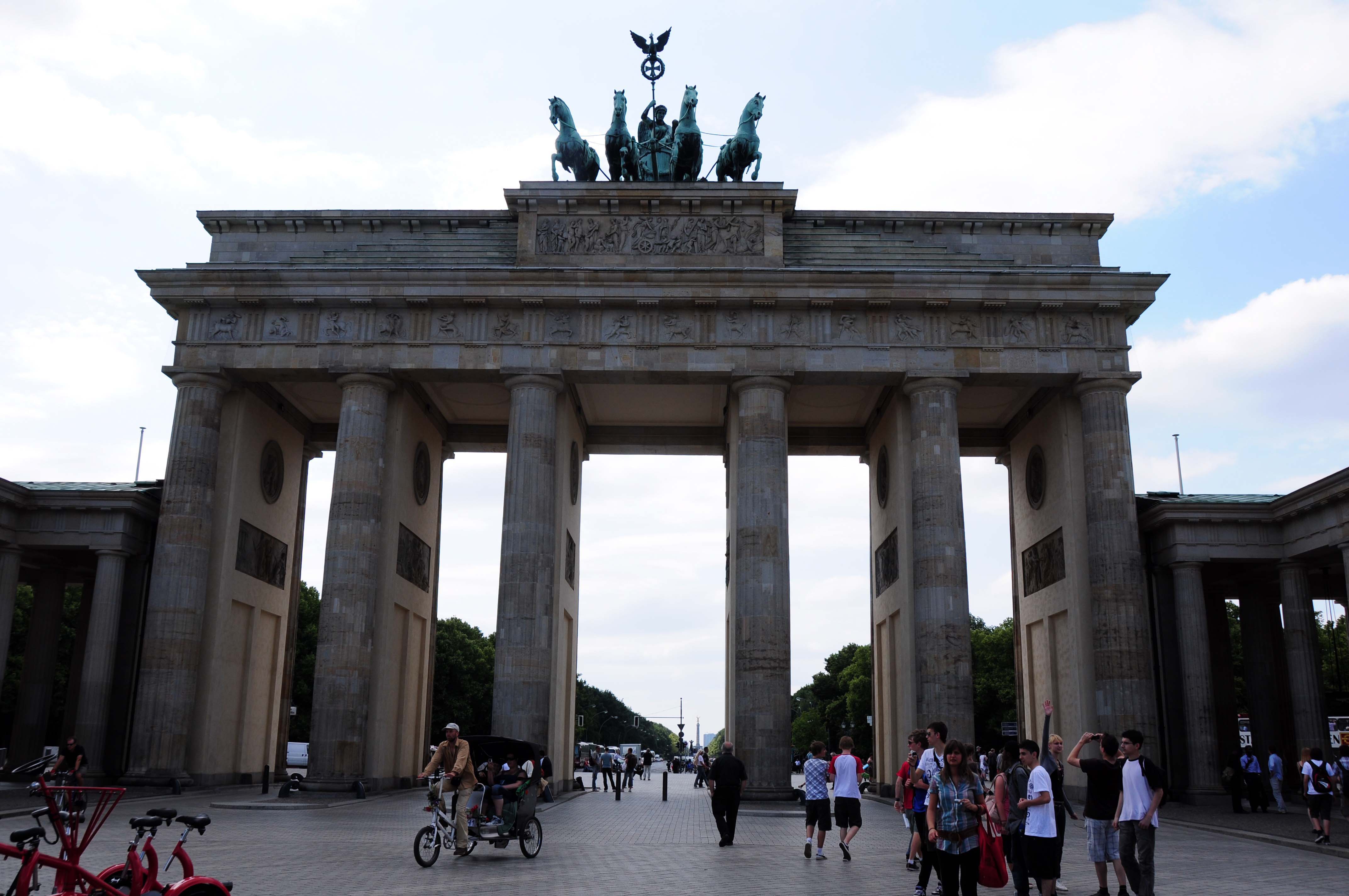 al symbol of Berlin. It is a neo-classical structure modeled on the entrance to the Acropolis. On top is the sculpture Quadriga, regarded as a symbol of peace. During the French occupation of Berlin in 1806, Napoleon had it moved to Paris. It returned to Berlin in 1814 and declared a symbol of victory with the Goddess Quadriga receiving a staff with the Prussian eagle and an iron cross adorned with a laurel wreath.
al symbol of Berlin. It is a neo-classical structure modeled on the entrance to the Acropolis. On top is the sculpture Quadriga, regarded as a symbol of peace. During the French occupation of Berlin in 1806, Napoleon had it moved to Paris. It returned to Berlin in 1814 and declared a symbol of victory with the Goddess Quadriga receiving a staff with the Prussian eagle and an iron cross adorned with a laurel wreath.
Reichstag
We planned on then going to see the Holocaust Memorial but got side tracked into going to see the Reichstag which is the German Parliament. A Neo-Renaissance building, it stands on the Spree river. It is a massive building with a huge lawn in front which has seen its share of demonstrations. From there then it was back down the street to the Memorial.
Holocaust Denkmal or the Memorial to the Murdered Jew of Europe
The Holocaust Denkmal or the Memorial to the Murdered Jew of Europe stands just on the other side of the Brandenburg Gate. It was designed by Peter Eisenmann. Different than any other memorial I have seen (and I have seen a lot of them), this one is a series of concrete slabs (2,711 of them) in all different heights, in a straight grid pattern, with walkways that undulate like a roller coaster track. To me (and to many others) it was symbolic of either the chimneys or tombstones, but Eisenmann left it to each of us to create our own interpretations. It left me a bit cold, that is, I was not moved by it. But it did afford many photographic opportunities (one of which is attached). While the memorial above ground did not do much for me, the information center, which is underground, was beautifully done with stories of survivors, stories of the camps – all the things one expects but done with style and much technology. There was a room of dimensions with 15 personal accounts written by survivors. There was a room of families which describes the fates of 15 families. There was a room of sites which describes where the camps were. And a room of names with computers with testimonies from Yad Vashem.
It is hard to go through Berlin and not think of the history. This is a city of beauty and ugliness, of horror and recognition of that horror, of grays and of colors. Where ever one looks, whatever sites one visits, one sees the pain of the city, the pain it caused its people and yet, also the recognition that Berlin (if not Germany) is taking responsibility and acknowledging the horrors of what it did. Not many cities (countries) face up to the fact that they were evil and butchers and then build the city back up in a way that teaches the newer generations of its wrongs. When I was in Munich many years ago, I could not wait to leave. Here in Berlin I feel, for the first time, an ability to perhaps let go of my hatred a bit – not to the Nazis, not to the Germans of old, but to present day Germany.
I ran into an Israeli woman in the bathroom at dinner and she asked what I thought of Berlin. When I told her all the things I just said above, she said it scares her because now they are going to the other extreme, i.e., being too nice. But I replied that the pendulum has to swing to the other extreme before it comes back to center.
Sony Center
From the memorial, it was time to head back. We headed past the Sony Center which is considered one of Berlin’s most exciting new architectural complexes (although I am not sure why!). It is made of steel and glass with a plaza under a tent-like roof. My favorite part was the Lego store with the head of Einstein out of legos!
We made our way back to the hotel, although a trail of crumbs would have helped. We got a bit lost, a bit turned around, but we did make it back. And of course all that is part of the adventure and allows one to find new, exciting sights. All in all, our short outing ended up being a 3-hour walk.
Reichstag, part 2
We rested a bit and then it was back off again to the welcome reception of my meeting. It took place back at the Reichstag (had I read my program, I would have realized we were coming right back there). This time we took the bus (the busses here are all double decker so if lucky, you get to sit in the upper front seat overlooking the entire vicinity). Much to our delight, the reception was on top of the Reichstag – on the roof – where there is a glass dome – a cupola – which forms a viewing platform with a panorama view of Berlin. Now when I say cupola, you are imagining a small struct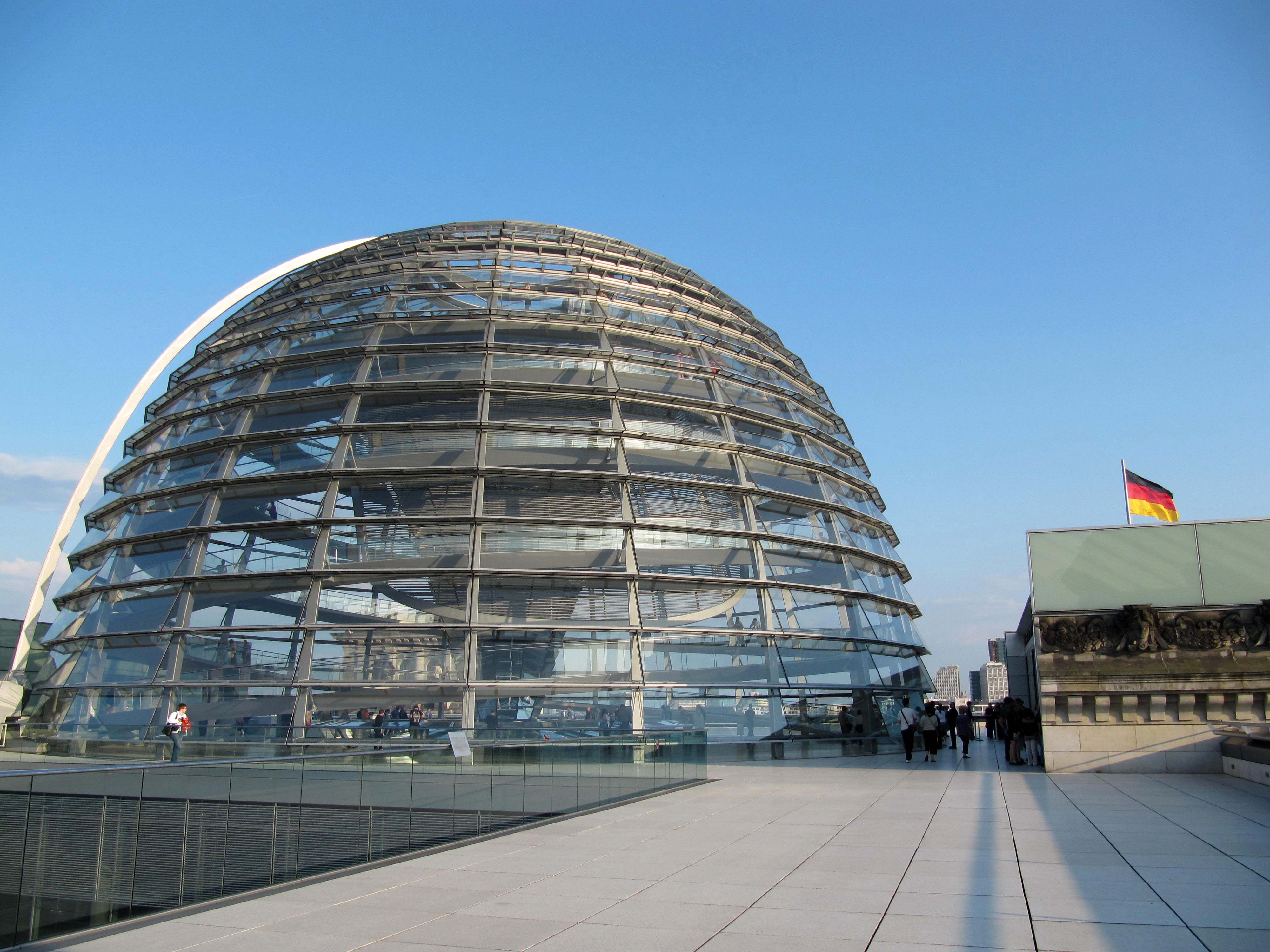 ure. This one is huge with a ramp that goes round and round all the way up – sort of like the Guggenheim museum. The views were spectacular. And that was just the first day.
ure. This one is huge with a ramp that goes round and round all the way up – sort of like the Guggenheim museum. The views were spectacular. And that was just the first day.
Thursday, June 25
Brewers Berlin Tours
The next morning we surprised ourselves and slept until 7:00. I think all that walking in the bright sunlight helped us adjust our clocks. We ditched the meeting and went on a six hour walking tour, recommended by our friends Brenda and Mark Mann. Yes, I said six hours, but it wasn’t really six hours. In fact, it was closer to eight hours! For those of you keeping track for your future trips, it was the Brewers Berlin Tours run by Terry Brewer. We were fortunate to have Terry as our guide. He is a crusty, opinionated former employee of the British diplomatic service (intelligence officer) who lived in Berlin before the wall, during the wall, and after the wall. Unfortunately it started out as a rather rainy day, but at least it wasn’t burning hot. And we had our raincoats and umbrellas, so who cared. In fact, it barely rained at all and it turned out a perfect day, albeit a tiring one.
Andy and I got there a bit early and got to walk around the Friedrichshain street area. First thing we saw was a memorial to the Jewish families that were taken away. It is everywhere.
We grabbed a bite to eat (a pretzel of course) and then met Terry by the Bandy Brooks ice cream shop. We lucked out as there were only 7 of us on the tour. So off we went. I won’t give the blow-by-blow but will point out some of the spots that made the biggest impression on me (which might end up being a blow-by-blow).
Neue Synagogue
We began by the Neue Synagogue which was designed by Eduard Knoblauch (which means garlic in German) in the mid-1800s. It was designed to be larger than the Catholic cathedral, and in fact is huge, with a gilded dome or three. During Kristallnacht it was partly destroyed and then further damaged during the Allied bombing during the war. Although all police and firemen were told to ignore the happenings on Kristallnacht, one captain, Wilheim Krutzfeld, stopped the crowd and was able to abort much of the destruction. But some of them got in and started a fire which did destroy part of the building. There is a plaque outside the synagogue in honor of his heroics (he lived through the war and died in 1953). Unfortunately, for as beautiful as the synagogue is on the outside, the inside was never restored. A few small rooms serve as a museum about life in Berlin, and one small room serves as the shul, but there is really not much to see inside. Around the corner stand the buildings that were the Jewish girls school and the Jewish hospital. The girls school, where the girls were all rounded up by the Gestapo, is now an empty building covered with graffiti. The hospital is now a Jewish day school.
And down the street is another sculpture of a group of people standing and waiting to be deported. It stands just outside the old Jewish cemetery where Moses Mendelssohn is buried.
While we saw all the major sights, the churches, the former palaces, the empty holes where the palaces once stood, the overall impression is that East Berlin is still trying to dig itself out and West Berlin has become too expensive for the local common worker to be able to live and enjoy life. I say this because we had an interesting conversation with our taxi driver who complained that ever since the wall came down, rent on his apartment went from 60 to 250 Euros, and where people used to go out and have fun in the evenings, they now stay home and drink beer alone because they can not afford to go out. This may just be the hardship of the taxi cab driver and not the sentiment of everyone, but it was an interesting perspective.
One way to tell East Berlin from West Berlin is the tram lines. East had the trams, West did not. And that is still true today. But there are other subtle ways too. There are still empty lots on the East side where houses once stood. There is construction everywhere on the East side – you can not look anywhere without seeing a crane. The houses that have been rebuilt are either out of prefab pieces (what Terry called Legos) or are plaster over brick. In fact, even the monumental buildings are really brick covered with plaster made to look like marble. Some of the houses are colorfully painted, but many are still drab. It does have a different feel on the East side than on the West side.
But the architecture is very interesting.
So we saw the Humboldt University and the magnificent statue of Frederick the Great on his horse. We saw the different palaces that are now museums and the place where the palace once stood and will soon be recreated. We walked Under the Linden trees and we saw St. Hedwigs cathedral. But we did not get to see Babelplatz. Now those of you that have never been to Berlin are wondering what Babelplatz is, and those of you that have been to Berlin (like Joel and Myra who both told us not to miss it) are asking why in the world did we not see it as we were right there?! Well, we did stand on Babelplatz (once called Opera Square), but the magnificent square was covered over by a tent for a Mercedes Benz sponsored fashion show. So, what we did not get to see was the monument in the center of the square commemorating the May 10, 1933 infamous book burning organized by who else, but the Nazis. Over 25,000 books were burned that day – all by authors thought to be enemies of the third Reich. There is a plaque there with a quote by Henirich Heine written in 1820, when he said, “Where books are burned, in the end people will burn.” How prophetic.
Neue Wache
Another high point of the walking tour, in the same area of town, was the Neue Wache, now a memorial to all victims of war and dictatorship. It was designed by Karl Friedrich Schinkel (as were many buildings in Berlin). While originally a guard house, in was more recently converted to the memorial. The front of the building has a huge Doric portico. But inside, it is a large, dark empty space with an opening to the sky. Beneath the opening stands a sculpture by Kathe Kollwitz – called Mother with her Dead Son – a statue of a mother holding the body of her son, whom she has brought back from war – and an eternal flame. [Joel – you were so right about Kollwitz art]. There is a granite slab over the ashes of an unknown soldier, a resistance fighter and a concentration camp prisoner. It was a very moving experience.
We saw so much more – more than I can really write about. We saw Checkpoint Charlie and a wonderful exhibit about the Wall and the history behind it. We saw the Topography of Terror on Prinz Albrecht Strasse which was the address most feared during the war. This was where, in 1934, the seat of the National Socialist Germany government. [By the way, did you know that the name Nazi comes from ‘Natzional’ in the Natzional Socialist Germany Party?] Anyway, Himmler, Heydrich and Muler – three of the most evil men – had their offices here and it was here that many of the plans of genocide were made. A building is being built to house the display of the terror, but now it is set up as an outdoor exhibition with pictures and detailed storied. It is very well done and would take over an hour to go through if you stopped to read it all. It is as I said earlier, the Berliners are trying to make the horrors that occurred transparent and own up to their grave past.
Next to the Topography of Terror is a piece of the wall – the first we got to see. It is smaller than I imagined, but it no longer has the barbed wire on top of it. Although I remember when the wall came down, it is hard to stand in front of the real thing and imagine what it must have been like – going to sleep one night and waking up the next morning with a wall keeping you away from your family, your school, your friends – all of happened to be on the other side. I could not help think about the wall in Israel. It is indeed keeping out terrorists. And it was built with a different purpose. But nevertheless, it is a wall.
Berlin, June 26
Much to our surprise, on Friday morning we slept until 9:30. Either the black out curtains did their work, the jet lag caught up with us or we were just plain old tired, but, as those of you who have traveled with us know, that was very unusual as our MO is get up early and go, go, go.
So, we got going slowly. We had breakfast at the local café across from the hotel where the proprietor was now our friend. We had our usual baguette with cheese and coffee. Then it was off to the Jewish Museum. We only had a few hours as I had to get back to the meeting by noon (I was here on business after all). We took the S-baun. Travel around Berlin could not be easier. There is the S-baun (above ground subway), the U-baun (underground subway), buses (which I already described earlier – double-decker, enclosed), and the tram (on the East side only). One ticket gets you on all four modes of transportation, and you can buy a three-day pass, which we did. So, the S-baun took us right to the Judisches Museum Berlin, in the Kreuzberg section of what was once East Berlin.
Jewish Museum
The museum was designed by Daniel Libeskind, a Polish-Jewish architect. The building is clad in zinc which gives it a silver glow. The jagged structure has been likened to a deconstructed Magen David, part of the feeling of Jewish life begin destroyed. The building was designed to make the visitor feel the history and culture and turmoil of the German Jew. For example, the museum guard pointed out to us that there are no directions on which way to go – just like life for the Jew in Berlin (or in Germany) was difficult, going through the museum is difficult. And he was right. Liebeskind was successful in making the visitor to this museum feel the angst. The floors slant, the halls turn sharply, with the whole building is in a zig-zag pattern, the hallways are narrow and long, there are places throughout the museum that are “voids” – empty spaces – representing the vacuum left by the destruction of Jewish life in Berlin. The entire experience helps evoke the feelings of loss and dislocation.
The garden of Exile and Emigration has 49 tilted pillars of stone which are supposed to represent Israel plus one extra for Berlin. But the tilt of the pillars makes one feel disoriented. There is a room which is shaped like a triangle, totally dark except for a slit of light from above. The walls are concrete, the air is still and silent. It is a frightening room.
There is another space – a void – that has concrete wall all the way up several stories, with discs of faces – thousands of them – on the ground. Clear what that represents.
While the Holocaust memorial did not move me, this museum is a masterpiece. Never before have I experienced such emotions evoked by a building.
Saturday, June 27
Museum Island
Today is Museum day. We spent most of the day at Museum Island. We took the bus (we have gotten so good at this) and easily found our way. The bus had to detour a bit as today was the Gay Pride parade which closed off many of the streets. This way we got to see streets and places we had no previously visited. We have walked all over the city so much at this point that we know our way around and mostly do not even need to refer to the map. Museum Island is indeed an island surrounded by the Spree River. Here is the cradle of the history of Berlin. This is where Berlin was first settled in the 13th century. The cathedral (Berliner Dom) stands here, but it is the five major museums of Berlin that give the island its name. The Bodemuseum is a dome-covered building at the tip of the island which provides the most scenic sights. Standing across the street, one sees the Spree split in to two tributaries as it hits the museum, with bridges on the two sides and the famous TV tower in the distance (as well as the ever present cranes). One of the museums is closed, but we were able to visit 3 of the other four (and then we burned out). One can’t help but wonder at the plunder of the world’s art walking through these museums (although every where it talks about how these works were “gifts” to this king or that emperor). The most impressive was the Pergamon Museum which had the most magnificent antiquities, including the outstanding Pergamon Altar (and why isn’t that in Greece?), the Ishtar Gate from Babylon and the Market Gate from Miletus (Roman town in Asia Minor), and an unbelievable collection of Near East art and Islamic art, acquired “as the result of intensive archeological excavations by German expeditions to the Near and Middle East…” I guess if all these beautiful objects had been returned, we would never have gotten to see them.
That took most of the day, but we still managed to have an ice cream from Bandy Brook and walk over to Alexandar Platz where the Town Hall stands, Neptune stands amid the goddesses in a beautiful fountain, and the ever present television tower (called affectionately the toothpick) stands (by the way – this is the second tallest structure in all of Europe).
